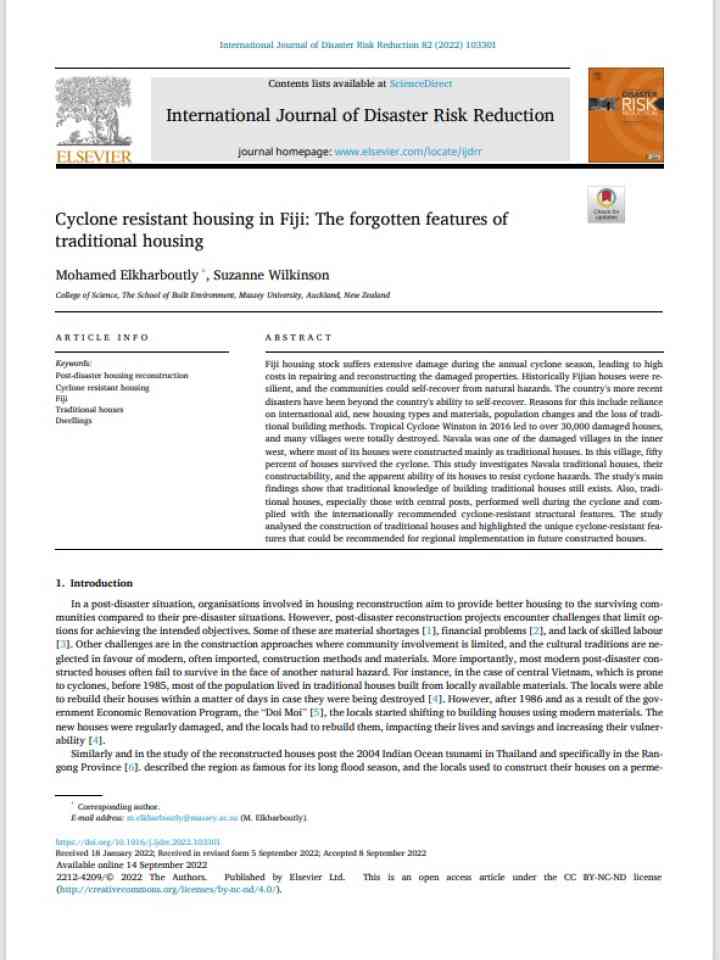Cyclone resistant housing in Fiji: The forgotten features of traditional housing
Fiji housing stock suffers extensive damage during the annual cyclone season, leading to high costs in repairing and reconstructing the damaged properties. Historically Fijian houses were resilient, and the communities could self-recover from natural hazards. The country's more recent disasters have been beyond the country's ability to self-recover. Reasons for this include reliance on international aid, new housing types and materials, population changes and the loss of traditional building methods.
Tropical Cyclone Winston in 2016 led to over 30,000 damaged houses, and many villages were totally destroyed. Navala was one of the damaged villages in the inner west, where most of its houses were constructed mainly as traditional houses. In this village, fifty percent of houses survived the cyclone.
This study investigates Navala traditional houses, their constructability, and the apparent ability of its houses to resist cyclone hazards. The study's main findings show that traditional knowledge of building traditional houses still exists. Also, traditional houses, especially those with central posts, performed well during the cyclone and complied with the internationally recommended cyclone-resistant structural features. The study analysed the construction of traditional houses and highlighted the unique cyclone-resistant features that could be recommended for regional implementation in future constructed houses.
Explore further
